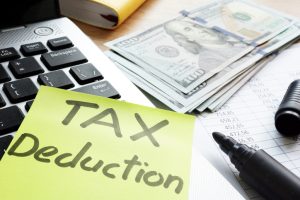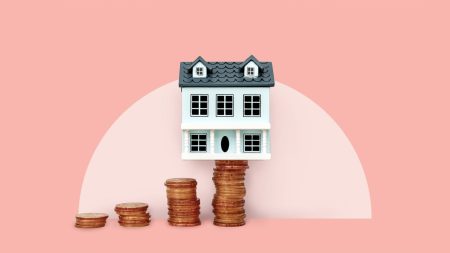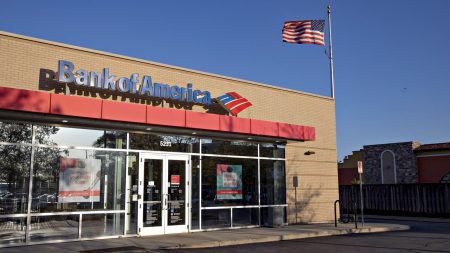Twenty-five million Americans have an unsecured personal loan, double the number from a decade ago, says TransUnion senior vice president Josh Turnbull.
“So the unsecured personal loan is increasingly a powerful tool in the variety of financial products available to and used by consumers… up and down the credit spectrum,” says Turnbull.
The question is: If you’re looking to borrow one during these uncertain economic times, what should you know?
We asked five industry experts, including Turnbull and J.D. Power’s head of lending intelligence, Bruce Gehrke, as well as three executives from lenders: Alliant Credit Union director of products Sean Briscoe, Best Egg president Bobby Ritterbeck and USAA head of product Scott Serpico.
These interviews have been edited for length and clarity.
Is the topsy-turvy economic environment affecting personal loan applicants?
A trade war is being fought on multiple fronts (or is it? asks the U.S. judiciary). The inflation rate remains stubbornly above the 2 percent target. Even the Federal Reserve appears reticent to forecast. And at various times, the stock market’s jagged trend line has resembled the vital signs monitor of a touch-and-go hospital patient.
So, what does all of that mean for those of us shopping around for a personal loan?
Ritterbeck: “When you look at this year so far, it’s been a lot about noise around tariffs and what that could cause. We’re still in the early stages of that… What it’s definitely done is caused a lot of uncertainty for consumers. Another thing, from a recipe standpoint, that’s not ideal. As soon as consumers get uncertain, they don’t have confidence, that can lead to some negative credit outcomes as well.”

Gehrke: “One of the things that personal loans are used for, when we ask about [borrowers’] motivation, is large purchases, whether that be appliances or other large purchases around the home. And there’s definitely — we saw this in other consumer studies — a preference toward delaying large purchases, kind of a wait-and-see attitude.”

Briscoe: “Another thing we’re seeing from consumers is preparing for the unexpected, where they are trying to consolidate debt, thinking about what happens if inflation continues to grow and when [their cash-flow] gets tighter and tighter on a monthly basis. So, that’s definitely been a shift that we’ve seen over the last year or so.”
Are lenders imposing stiffer eligibility criteria these days?
In some ways, personal loan lenders are behaving like the most insulated consumers. They face uncertainty, but instead of making drastic decisions, they’re monitoring the economy and planning for multiple scenarios.
As a consumer and potential personal loan borrower, it might behoove you to similarly take the long view. Still, if you’re not well-insulated (maybe your emergency savings needs replenishing or your income is on shaky ground), it’d be nice to know whether personal loan borrowing will be an option at all.

Ritterbeck: “When inflation was at its peak [in 2022], you saw a lot of tightening of the belts [among lenders]. As inflation has gotten under control, you’ve seen a little bit of loosening from the creditor side. And I don’t think this recent noise [around tariffs] has made a material difference yet in changing that, that current pace.”

Turnbull: “The most recent quarter for which we have origination data [the first quarter of 2025], personal loans are up over 25% in terms of origination. So, there’s a lot more lending happening now than there was a year ago. And the distribution of who those loans are going to is relatively unchanged. So, we’ve already seen lenders feeling much more confident.”

Serpico: “Having been doing this for 26 years, I think it’s pretty normal to see lenders make subtle adjustments as part of good hygiene of managing their book… We’ve seen that play out through all the economic cycles. I’m not seeing anything of note yet in [the] market of saying there’s any drastic moves by any particular lenders that are ultimately loosening or tightening.”

Gehrke: “It’s delinquencies [if they rise] that will impact risk management among lenders. So, you may see some pullback on the types of loans that they’re making… We’ve seen the fintechs stretch that envelope. There [are] some proprietary systems out there that are trying to identify creditworthiness through other means, other than purely looking at credit scores. And they have expanded lending [for] some consumer groups. You may see some contraction to that.”
Percent of delinquent unsecured personal loan borrowers
|
30 days late |
60 days late |
90 days late |
|
|---|---|---|---|
|
Q1 2025 |
5.3% | 3.5% | 2.3% |
|
Q1 2024 |
5.4% |
3.8% |
2.5% |
| Source: TransUnion |
When will personal loan interest rates decline?
If you have credit card debt with an average APR of around 20 percent, refinancing it to a personal loan with, say, a 12 percent rate might seem like a no-brainer. Why wait? And if rates descend, you could refinance again.
But for more discretionary borrowing, you may want to monitor lenders’ advertised basement APRs. In fact, nearly 7 in 10 consumers who are considering a personal loan have already researched rates, according to an April Santander survey.
“As the trade wars have picked up and that uncertainty has grown, that timeline of rates coming down has been pushed out and out and out to the point where it’s really unclear if and when they will and to what degree,” says Alliant Credit Union’s Briscoe. “And so, when we work with our members, typically what we’ll say is, ‘Start with what matters to you and your financial situation, because sometimes you could be waiting for a rate decline that never comes.’”
| Average interest rate on a two-year personal loan | |
|---|---|
| 2025 (Q1) | 11.66% |
| 2024 | 12.27% |
| 2023 | 11.87% |
| 2022 | 9.87% |
| 2021 | 9.38% |
| 2020 | 9.51% |
| Source: Federal Reserve |

Turnbull: “Relative to where we’ve been, interest rates are high. Relative to a longer arc, interest rates are not necessarily high… But there’s value in a personal loan in that I know what the rate is going to be, I know what the payment is going to be over time versus a variable-rate instrument. So, to some extent, people are drawn to an installment type product, [considering] where we are now.”

Ritterbeck: “Where rates are going to go has become anybody’s guess. For the last two years, it’s always been an expectation that they’re going to drop and they didn’t, they didn’t, they didn’t. They did a little, but we expected a lot more. And then, we kind of are where we are. And some of the uncertainty is keeping [rates] from moving up or down.”

Serpico: “If you’re following the markets, it’s very fluid. But I think it’s important to watch the macro trends. Look at jobs, look at inflation data, look at overall spending, look at debt load. I think right now, again, we’re very much in this wait-and-see period… We’re watching what the Fed will do.”
Are home equity products still a good point of comparison for personal loan applicants?
While buy now, pay later loans might seem like the closest facsimile to personal loans, the vast majority of BNPL customers use them for shorter-term needs and as a replacement for the plastic in their wallets. Home equity loans and lines of credit, on the other hand, are more often a worthwhile alternative to personal loans for homeowners. That’s partly because they can help you achieve the same ends, whether that’s debt consolidation or covering a personal expense.
Of course, these products do it in different ways. Personal loans are typically unsecured and eligibility is based on credit. Home equity products, by their very nature, are secured. They take your credit into account to determine your interest rate and terms, but you must have sufficient equity in your home to be eligible at all.

Gehrke: “We’re seeing some competition there because generally you’re getting a better interest rate [on home equity products] than you would with an unsecured personal loan. There is… some of what I would call the ‘hangover’ from the [2008] financial crisis, where people really shied away from home equity loans because they didn’t want to put their home at risk. That memory is kind of fading a little bit. And some [newer] homeowners now didn’t live through that. So, they’re more willing to go to that product for liquidity.

Ritterback: “The bright side for home equity in this country is that the total home equity has never been higher than it is today. So, people’s ability to tap into their home equity is very strong today. Rates are not what they once were, but relative to unsecured credit, it’s a great alternative. It’s just slower and a little bit harder. You have things like much longer timelines, you have costs associated with it, like appraisals… versus a personal loan, [which] is a much easier product.”

Briscoe: “Most of all, we see that the lines across products are blurring. We’re now seeing home equities that look and feel more like a credit card. And there are pros and cons to those things, but the line between payments and lending is starting to blur as technology is allowing more and more of these types of solutions.”
What’s your go-to personal loan advice?
Whether you’re a potential applicant or current borrower, it never hurts to hear from the experts, particularly given the economic uncertainty ahead. Hopefully, their wisdom can help you avoid common personal loan mistakes.

Serpico: “It’s going to be really prudent for consumers to take a hard look at their debt load and find ways to improve their credit… to make sure they put themselves in a position that could qualify for that loan or to capitalize during the upcoming cycle.”

Ritterbeck: “Being comfortable using debt to accomplish what you need to, that’s an OK thing… if you [borrow] in a way where it’s like, ‘Hey, I’m just not taking that extra three grand that I need. I’m actually going to take this opportunity to put myself on a structured path to get into a better spot from a personal balance sheet perspective.’ I think that’s something to be proud of and not ashamed of. I’m shocked at how much shame comes into the financial decisions that people make.”

Briscoe: “If you are using that product, that loan for debt consolidation, don’t add additional debt on top of it. The worst thing that we see folks run into is they will consolidate credit cards into a fixed-rate loan, and while they’re paying that loan back, the credit card balances start to grow again… And then the next time you’re looking to consolidate, it’s twice as large of a loan, and then the third time, you’ve kind of overextended yourself.”

Turnbull: “As a consumer, if you find yourself in a situation where you don’t know how you’re going to make that next payment on your personal loan, call [your lender]. It is in everybody’s best interest that you have that awkward conversation with the lender. And I think people are often surprised how willing lenders are to work with borrowers to find a way to keep that from becoming a fraught situation.”
Why we ask for feedback
Your feedback helps us improve our content and services. It takes less than a minute to
complete.
Your responses are anonymous and will only be used for improving our website.
Help us improve our content
Read the full article here









